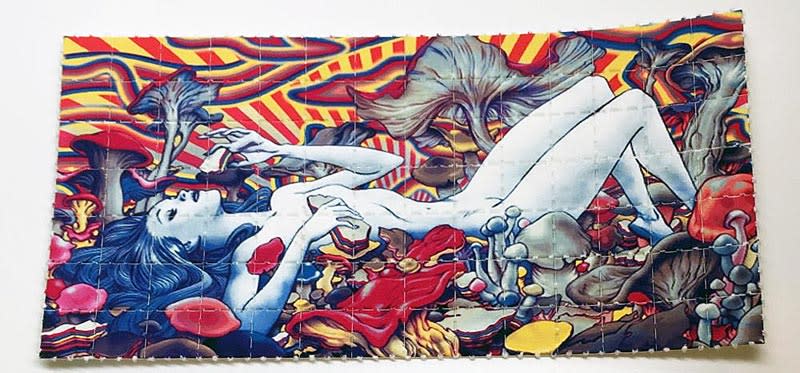Psychedelic art describes a type of visual art inspired by psychedelic shapes and figures. This style is strictly influenced by the use of hallucinogenic substances, such as LSD, mescaline, and psilocybin. It is based on the idea that the artistic inspiration caused by a state of trance serves as an optimal way of performing art. The main theme of psychedelic art is that of analyzing the inner world and the subconscious. In common vernacular, "psychedelic art" refers to the artistic movement of the counterculture in the 1960s. Concert posters, album covers, murals, comics, and more, reflect the mental state caused by induced hallucinations from LSD. Furthermore, this psychedelic state makes it easier for artists to express their political, social and spiritual feelings freely.
Characteristics
Psychedelic art was partially inspired by Art Nouveau. Common to this style are the distinctive elements of the curvilinear forms, floral frames, the natural theme, and female figures.
Bright colors
The colors used in psychedelic arts are various and mostly bright with high contrast. The use of these colors comes from the fact that this art wants to convey or simulate a psychedelic experience. Therefore, the colors are chosen to catch the viewer’s attention by being bright, dazzling, and somewhat disturbing. The use of highly contrasting colors makes the artwork appear more saturated and overexposed. Moreover, the use of color also helps to establish the mood of the entire scene. The use of mainly bright colors, which can express a positive mood, wants to convey a sense of satisfaction. However, the high contrast can also convey the opposite feelings.
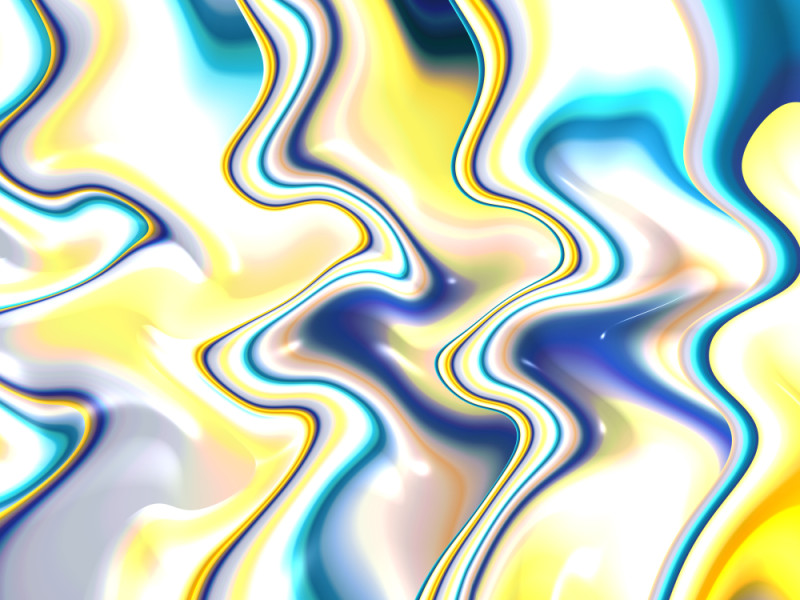
Visually overwhelming
A psychedelic artwork is usually very rich in detail, being a mixture of various elements, and presenting bright and highly contrasting colors. This situation can render it visually overwhelming. However, since the artwork should offer a psychedelic experience this result is an important characteristic. A psychedelic artwork combines many different elements to describe the tremendous, unpleasant or terrifying experience or dreams. What is portrayed should not be something real but something which is a product of the human subconscious. Therefore, there is no predetermined construct or basic concept for judging whether a psychedelic work of art is minimal or symbolic.
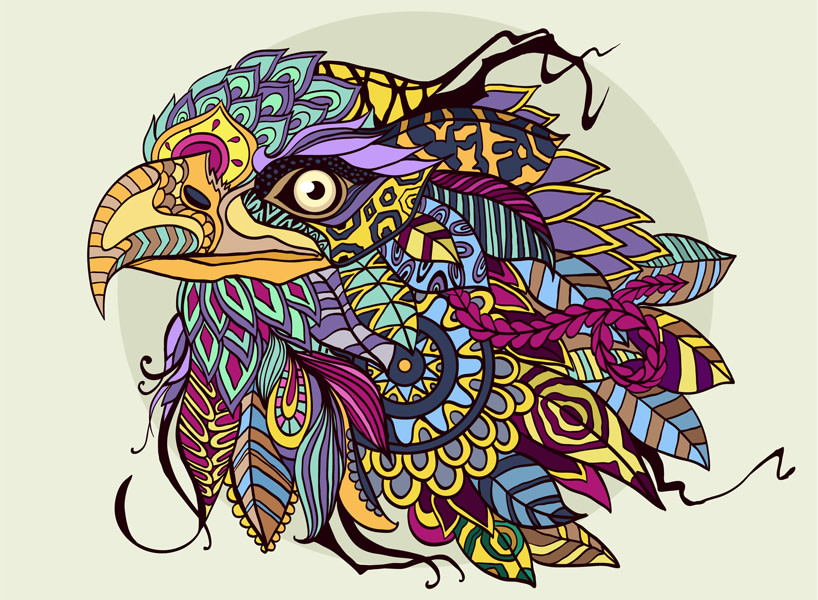
Rich in Detail
Psychedelic art is very rich in elements and details since it aims to render the scene as rich as possible. Usually, this high detail is achieved through a mixture of various images that are not necessarily related. The elements can also be repeated continuously or even distorted. The details are very deep and sometimes even stylized. The microscopy detail is a very important element since the artwork should convey a meaning as a whole. The fact that every inch of the canvas is filled helps to convey a sense of uniqueness. The details are not supposed to be different from each other but can be quite similar.
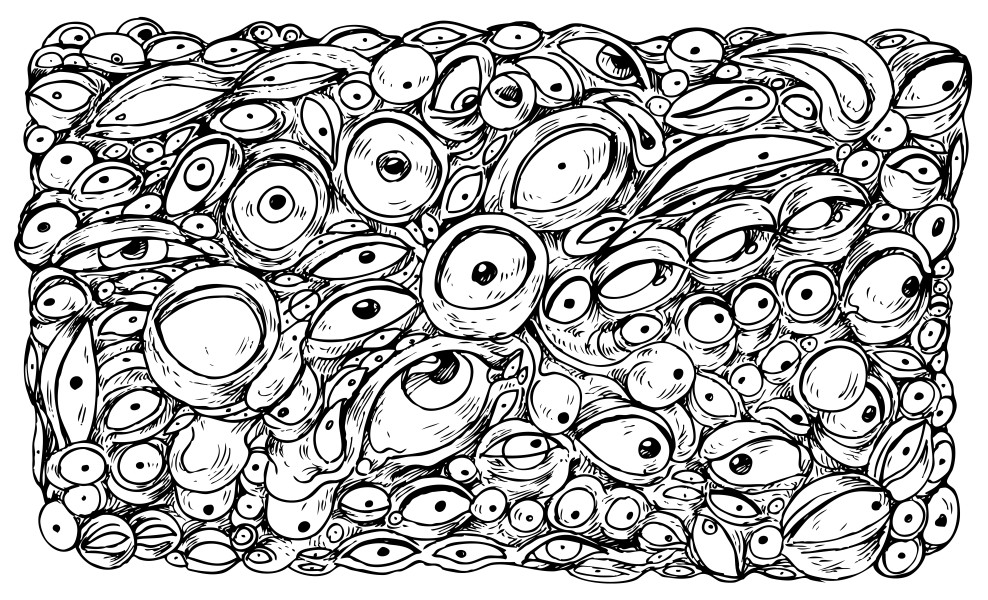
Horror vacui
Horror vacui defines the act of filling the entire surface of an artwork with very accurate details. It symbolizes the hyperactivity of the mind during a psychedelic experience. Every vacuum must be filled and detailed. Therefore, the work is visually overwhelming for its richness of detail. Furthermore, this search for detail expresses the need to control space, and symbolically win over the blank canvas. This abundance of elements and lack of empty spaces could be perceived as confusing for the viewer.
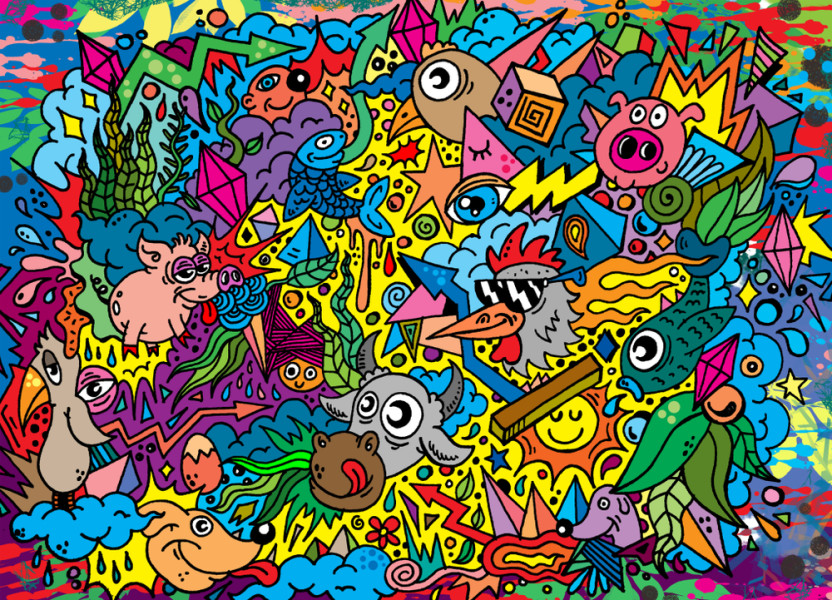
Repetition
Repetition concerns colors, motifs, themes or images. Repetition is another symbolical reproduction of an element of the human mind. It tends to create similar images over and over when under drugs, or also during dreams. Repetition is strictly related to rich details, since it may serve the purpose of enriching the whole composition. It can also serve as an expression of a specific message since the repetition can involve defined objects as well.
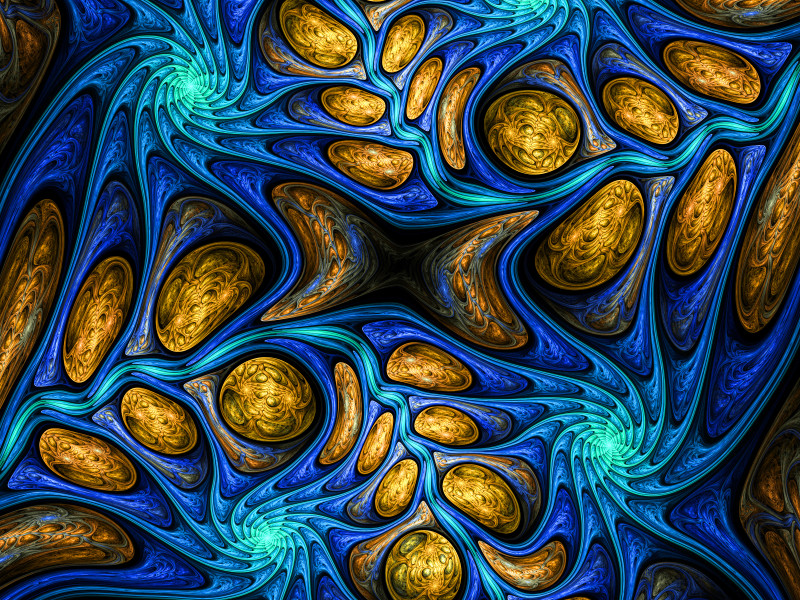
Freedom
A very important element in psychedelic art is freedom, both in the way it is used and in the way it is felt. Since psychedelic art doesn’t want to be realistic, the meaning of the artwork is completely up to the artist. This type of art doesn’t have strict rules or principles to adhere to, leaving absolute freedom of composition to the artist. The artwork can be executed with any medium and the messages conveyed can be infinite. It could be said that one principle of psychedelic art is that of improvisation. It is a result of a state of trance, and like a psychedelic experience, it can have various stages with very different characteristics. It can be a mixture of completely meaningless symbols and shapes or a very abstract composition of geometric figures. The only thing that guides the artist is his flow of consciousness.
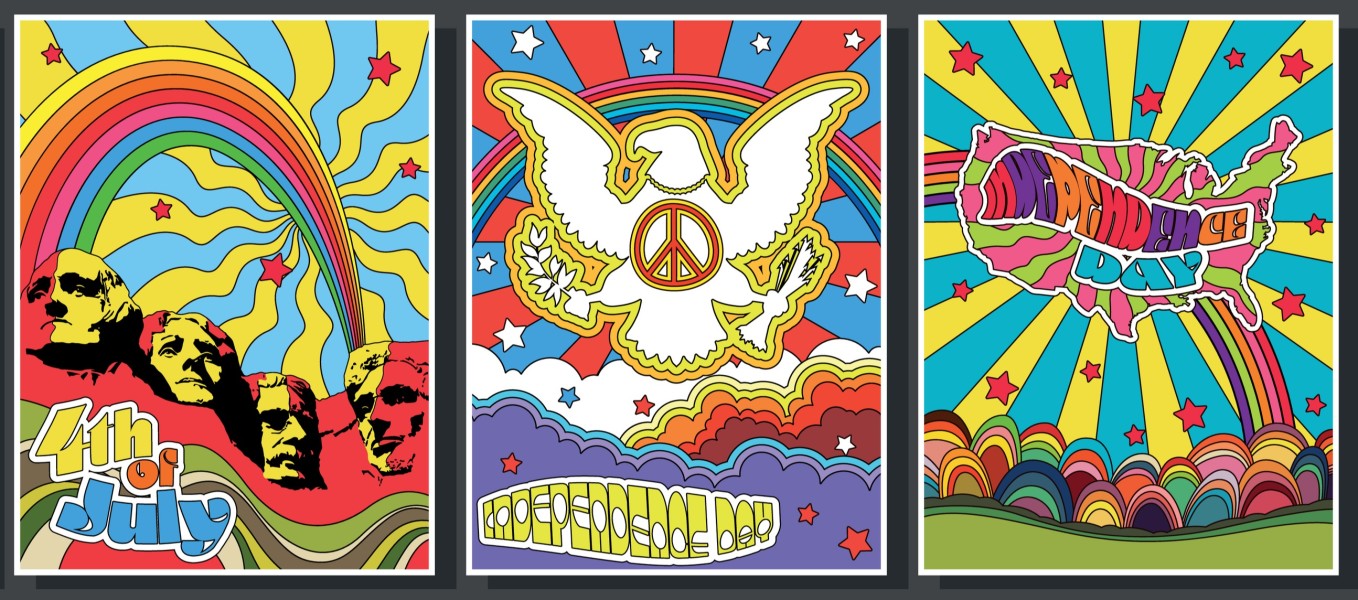
Origin from Art Noveau
Variations
The variation includes the common theme of representation within psychedelic artworks. They are based on the main themes or shapes that characterize the different artworks.
Optical Illusions
An optical illusion is any illusion that deceives the human visual apparatus, making it perceive something that is not present or making it perceive incorrectly something that in reality is presented. This optical illusion can be rendered both through colors and shapes. They can be of various types based on which type of illusion is induced. Geometric illusions are cognitive illusions in which the geometry of the image or part of it is wrongly perceived. For example, parallel lines are perceived as divergent, converging or curved. In other cases, two elements that have the same size are perceived with different dimensions. The effect can be caused by the fact that a light-colored area tends to be perceived as wider than the same dark-colored area. Perspective illusions represent three-dimensional images on a flat surface. In some illusions, the viewer has the perception of parts of images that do not exist. Furthermore, the viewer can perceive a movement of some immobile elements of the image. The artist can also resort to the use of heavily distorted images so that, if viewed frontally, they are incomprehensible. This can also result in ambiguous figures, in which the images display two or more possible distinct observable figures. The artist can also represent impossible objects, which could not exist three-dimensionally.
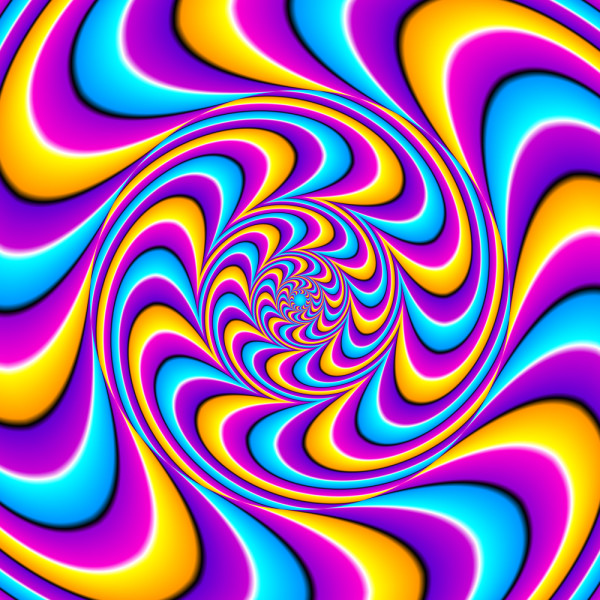
Fractals
A fractal is a geometric shape that is repeated in its form in the same way on different scales. Therefore, by enlarging any part of it, the artist can obtain a figure similar to the original. Usually, these elements are created by calculating mathematical fractal functions and transforming the results of the calculations into images. A fractal shape is a common element experienced by people under the influence of psychedelic drugs. Therefore, the use of these shapes serves to define the artwork in a more specific psychedelic setting. Furthermore, the use of this element can also serve to convey abstract meanings since a fractal can have many shapes. The use of fractals can also convey a sense of harmony since the patterns it creates appear to be very defined and ordered.
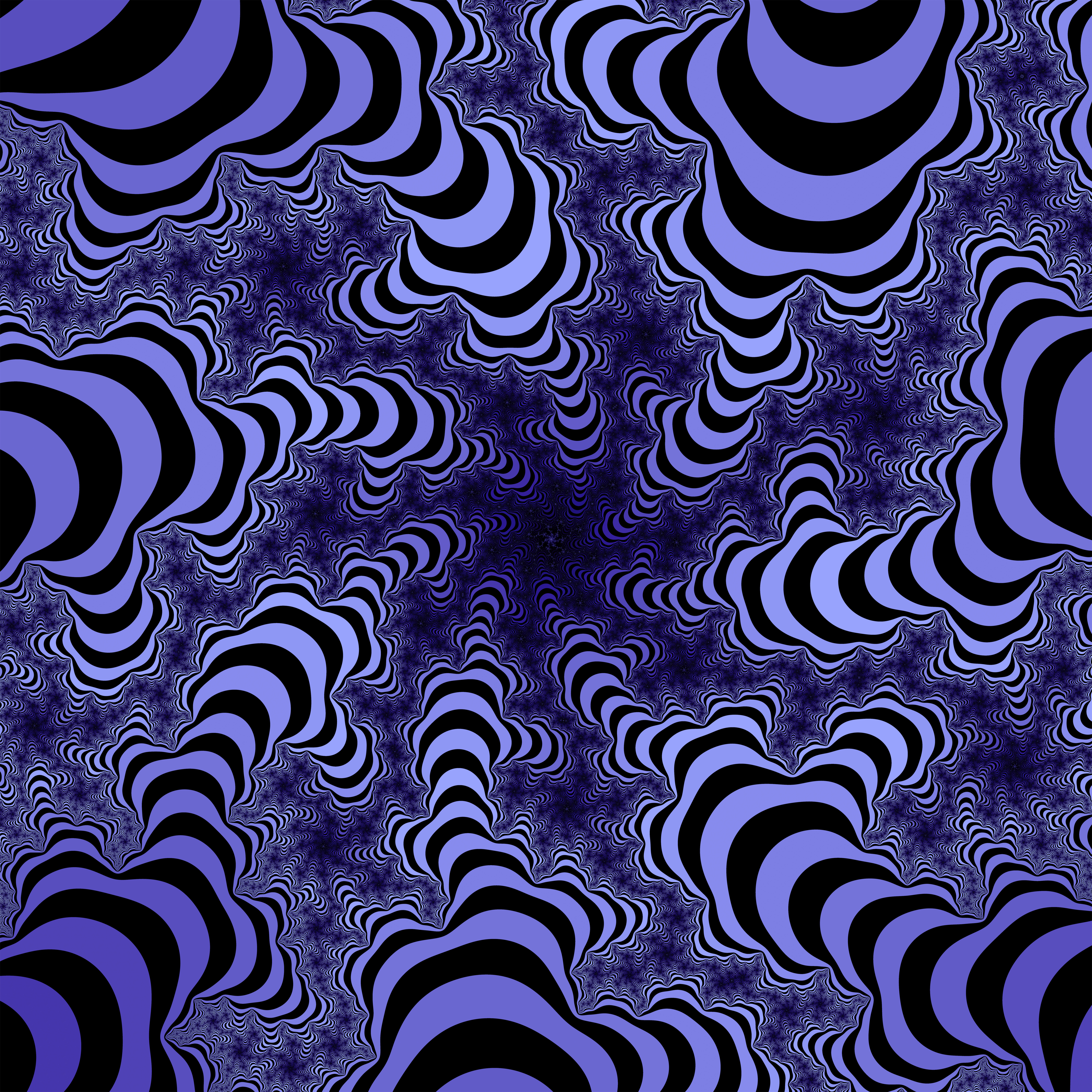
Melting
This variation concerns the depiction of melting subjects, such as everyday objects, living beings or colors that appear to be melting on the canvas. The fluidity of melting objects can have various meanings, one of which is the expression of the flow of consciousness. It can also be used to express the relativity of the passing of time or to symbolize the dematerialization of identity. Melting is a very popular variation since it offers an interesting visual alteration of ordinary objects. This visual variation can also be repeated, showing the object more melted and distorted each repetition. In this way, it could help to symbolize decadence and abstraction.

Symmetry
Symmetry indicates the presence of some repetitions in the geometric shape of an object. It contributes to the balance and harmony of an artwork. Symmetry can be of different types. In bilateral symmetry, the figure or main element is placed in the center, while on the sides two figures that balance each other. The two side elements have similar characteristics and consequently equal visual weight, providing stability and balance to the work. The translational symmetry consists of the repetition of figures along an axis. In rotatory symmetry (central or radial) the forms have similar characteristics and develop around a point, usually the center. It is typical of circular formats and is a common element in many pictorial styles.
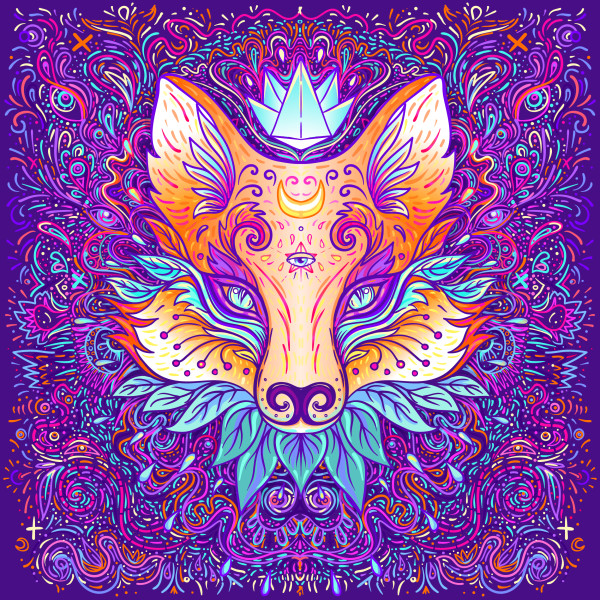
Distorted Imagery
The distortion of an image is maybe the most common of psychedelic art. The human mind is not able to clearly understand the reality of things while on drugs and therefore it appears misshapen. Often the distortion emphasizes a pure aestheticization of the image. The visual error becomes an aesthetic element that decomposes and disturbs the image and blurs the vision. The distortion of the image serves to hide the beauty so that the viewer identifies himself with the work to analyze and better understand the identity of the image itself. The most common way of distortion is anamorphosis, which is an effect of optical illusion whereby an image is projected onto a bidimensional plane in a distorted way. This method makes the original subject recognizable only by looking at the image from a precise position. Moreover, distort images serve the purpose to change the meaning associated with a figure or an object, often in a caricatured manner.
Collage
The collage is a composition obtained by superimposing papers, photographs, objects, newspaper or magazine clippings. In general, collage can also represent various overlapping objects or figures without actually being three-dimensional. Often collages are used with critical irony towards society. It is not uncommon to find images assembled in an unnatural way where the dream or the ideal of the author is opposed to the meaning of the material used.

Glitches
The term glitch identifies a defect in the system in various fields of application of electronics. Images are distorted by damaging or manipulating electronic objects, however, this error can also be simulated. These distorted images are characterized by harsh, non-natural colors, and abrupt geometric sequences that symbolize an explicit rebellion against the structured presence of digital technologies.

DeepDream
Deep Dream is an image processing program that creates effects that are widely used in psychedelic art. It uses a neural network to find and enhance patterns within images through algorithmic pareidolia, creating hallucinogenic effects that recall the appearance of a dream. The images appear highly psychedelic and surreal, resembling the same images generated by the brain when taking LSD and similar drugs.
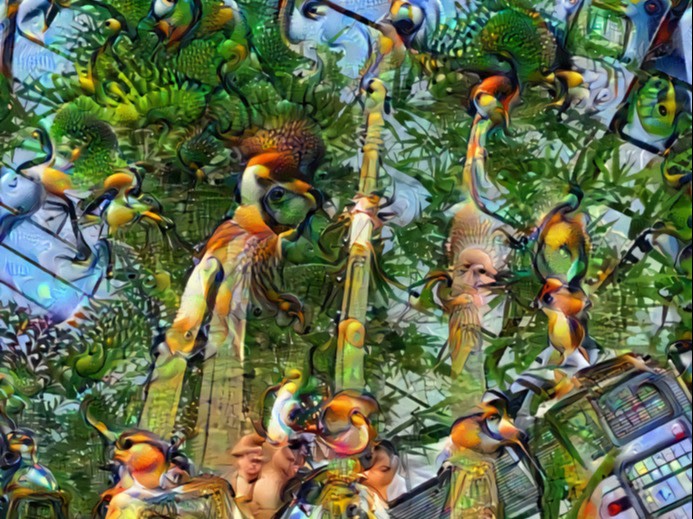
Kaleidoscope
The kaleidoscope is an optical instrument that uses mirrors and fragments of colored glass or plastic to create a multiplicity of symmetrical structures. By turning the instrument, it is possible to see colored symmetrical geometric figures, generated by the union of the direct image of the fragments and those created by the reflections in the mirrors. The images change their shape continuously, without ever repeating themselves. This variation aims to obtain shapes and combinations using the same methods of the kaleidoscope. It is usually along with optical illusions to give the viewer the impression of movement.

Negative
The work, often a photograph, presents colors opposite to those of the original image. The scene usually appears macabre and melancholic, due to the predominance of dark colors. This variation is often used to involve the viewer in analyzing the context of the artwork or to dwell on the emotions of a portrayed character.
Technicality
Hallucination
Hallucination is a false perception of an object, or more generally of reality. It is the main technical aspect of psychedelic art since the whole style is based on it. Psychedelic art seeks to represent perceptions of parallel realities, of mystical experiences or more generally of deep dreams. Through the representation of the innermost reality of an individual, it wants to pursue an escape from reality. Furthermore, this element can also serve as a reflective and introspective element.
Usage
Relation to drugs
Psychedelic art is strictly connected to drugs. The mental alteration produced by the consumption of LSD and other hallucinogenic drugs is employed in an attempt to enhance the creative abilities of the human mind. This way an artist can have more freedom and inspiration. Furthermore, the use of drugs is considered capable of causing an expansion of consciousness aimed at generating creative experiences above the average. This applies also in the social and intellectual sphere, with a provocative attitude towards the strictness of the bourgeois classes.
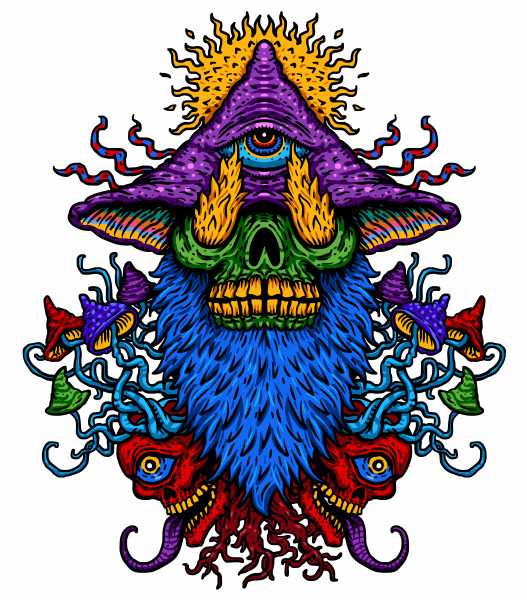
Blotter Art
Blotter art takes its name from the term "blotter" which was the name that designated the illegal distribution of LSD. It started as a way to decorate LDS packaging to give information on what type of drug was contained in it. It quickly developed into its art, including iconography and images from rock and pop culture.
